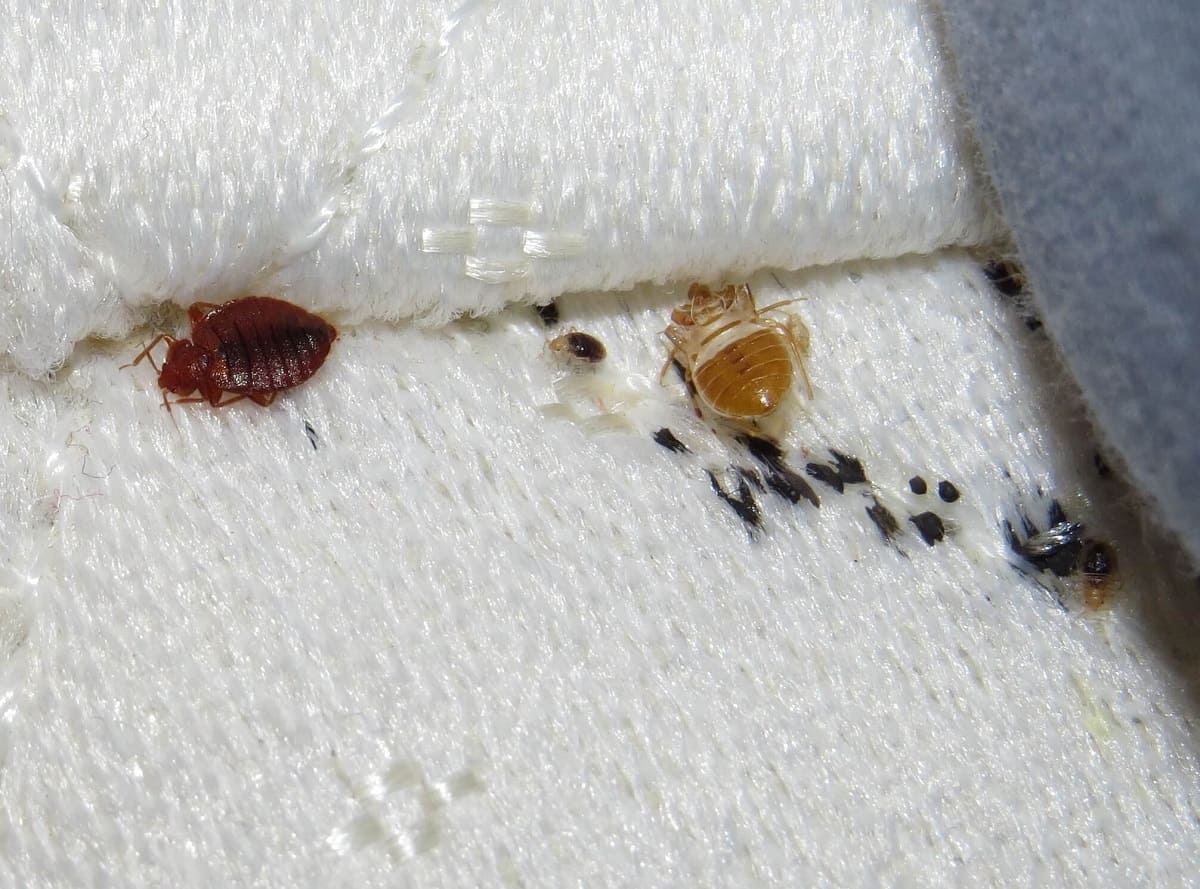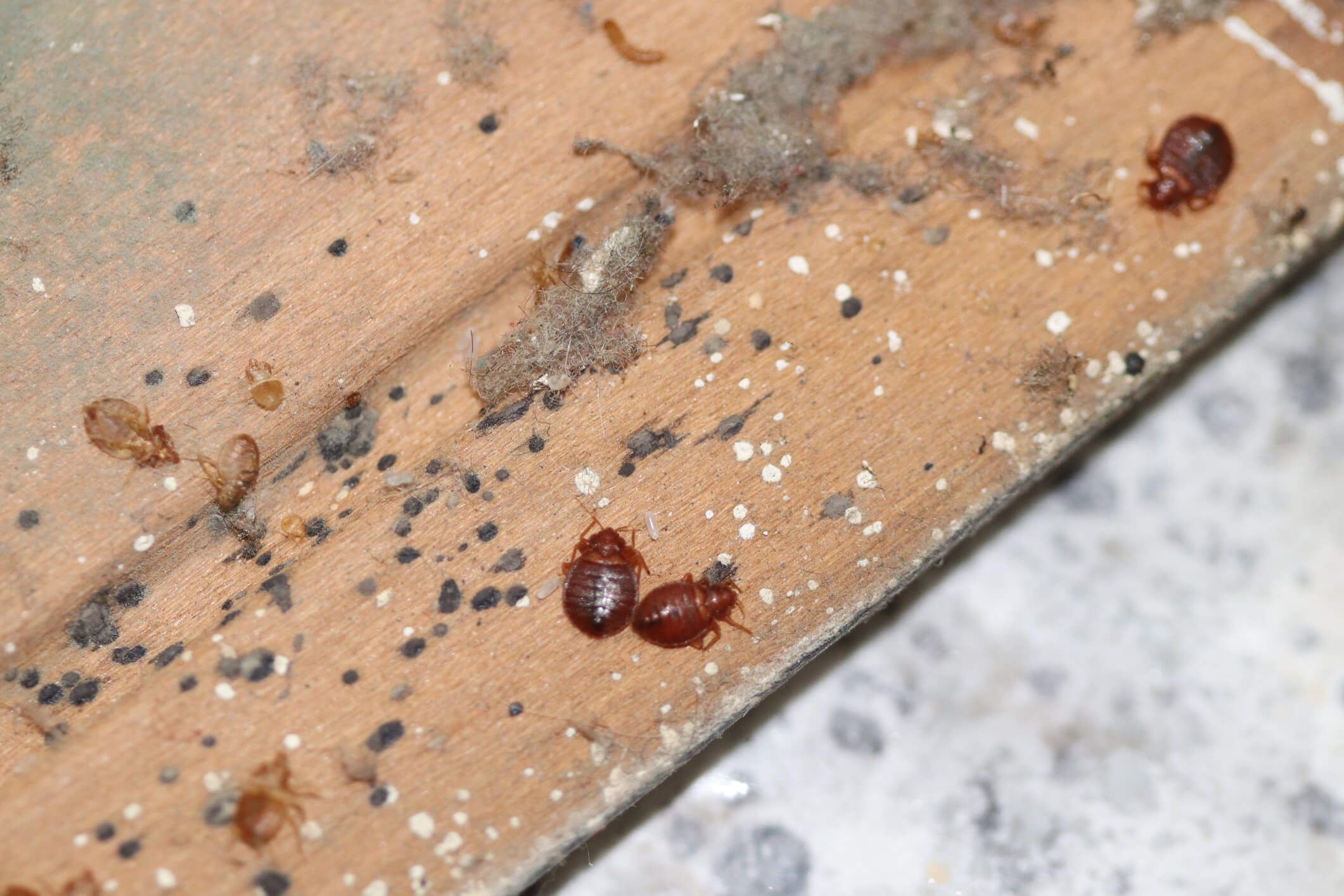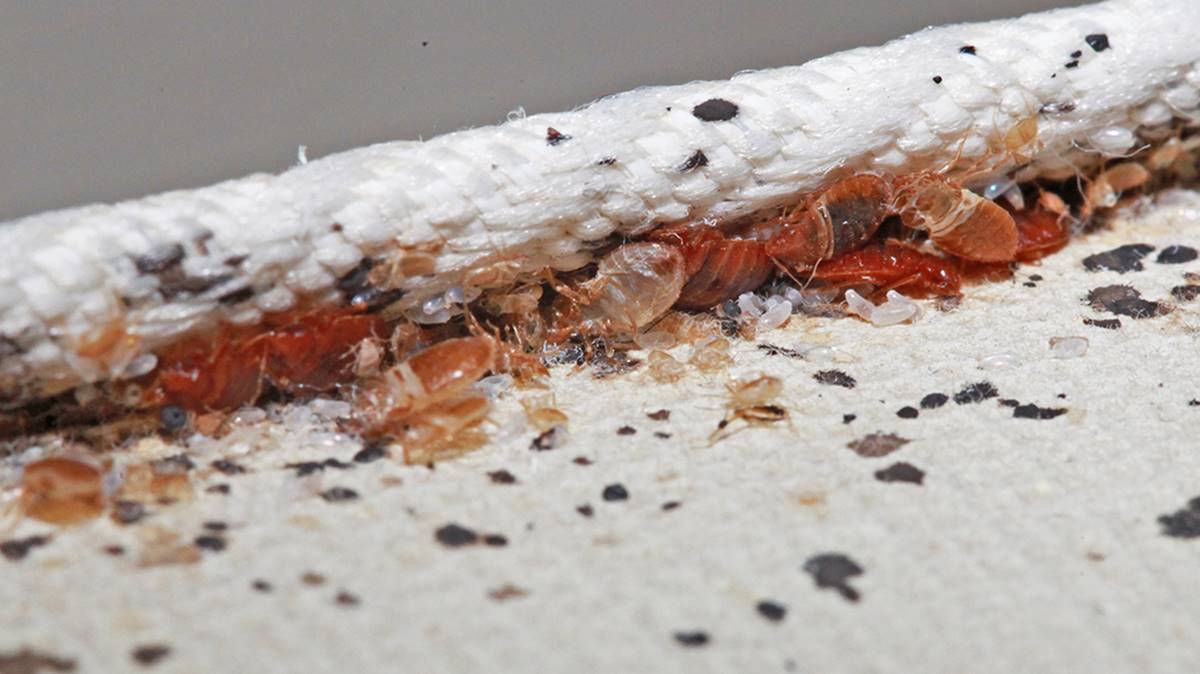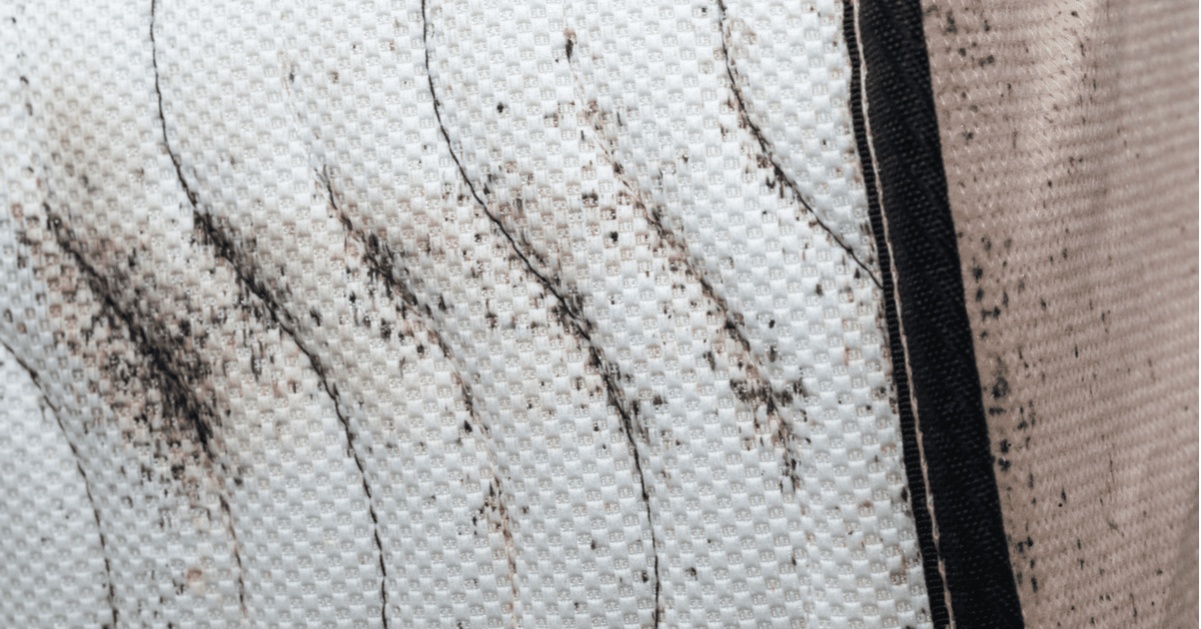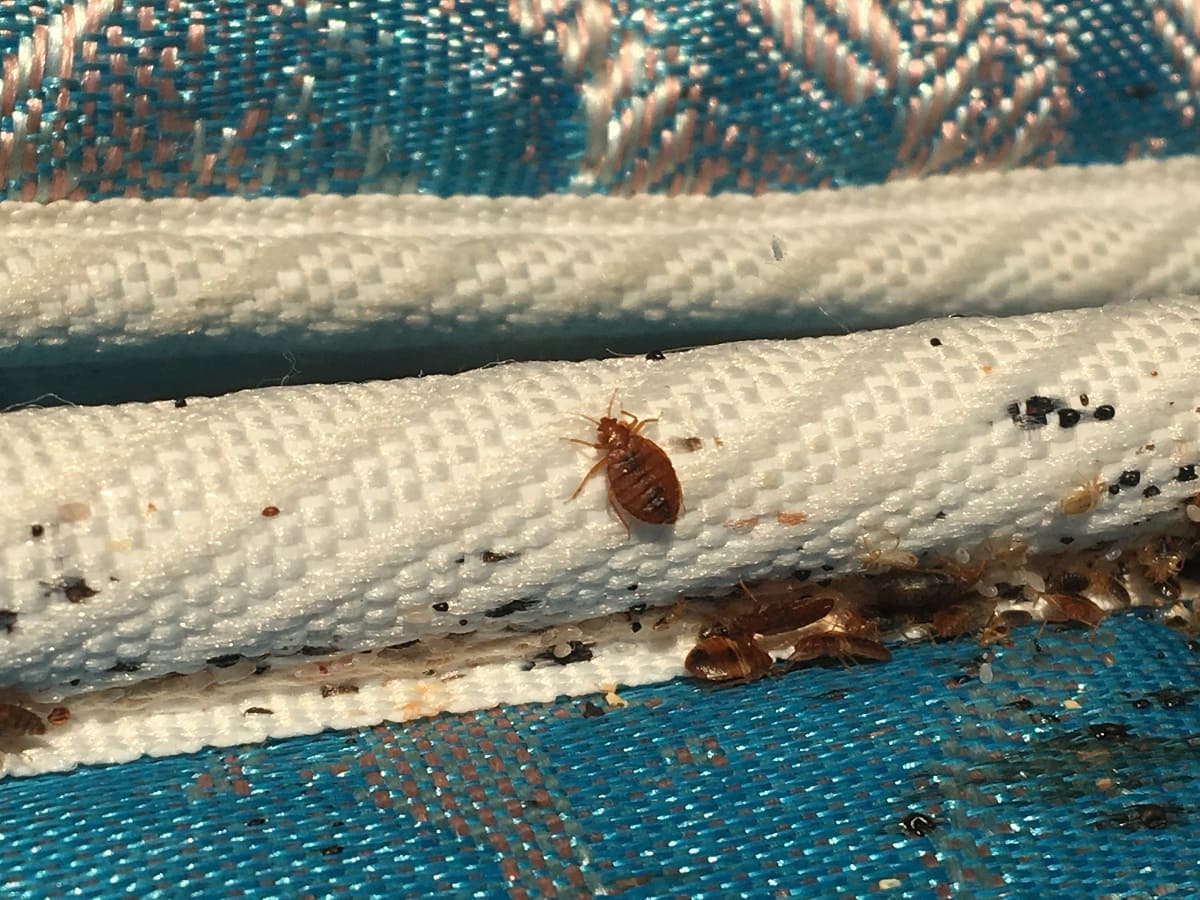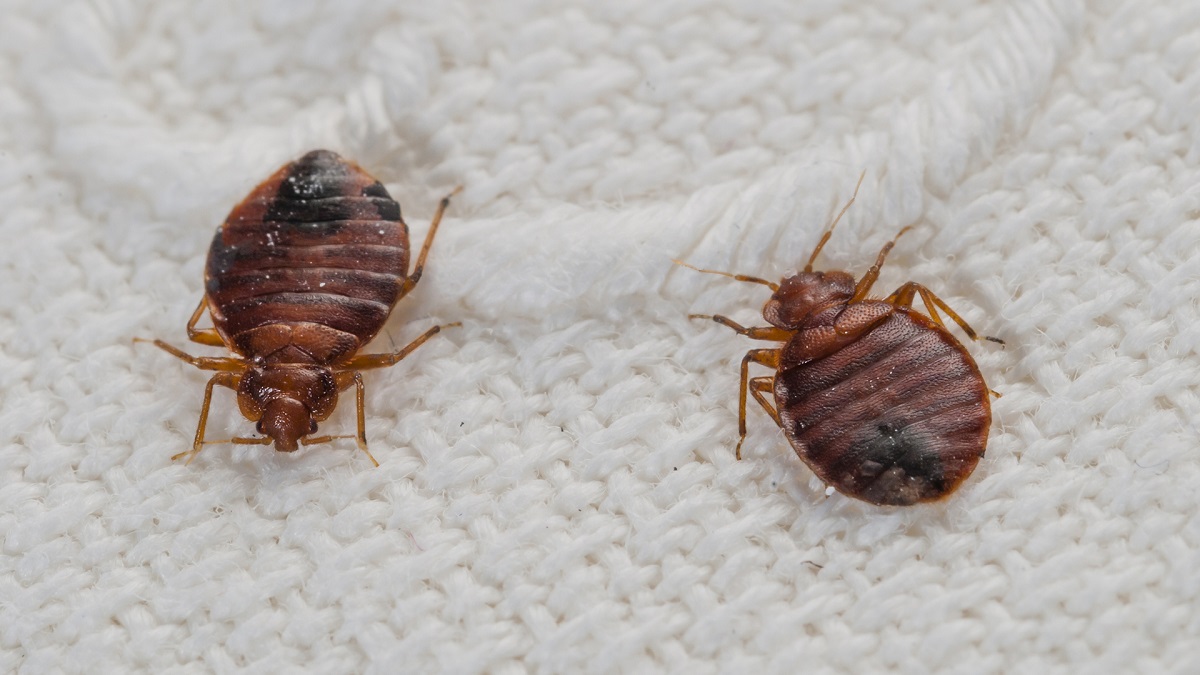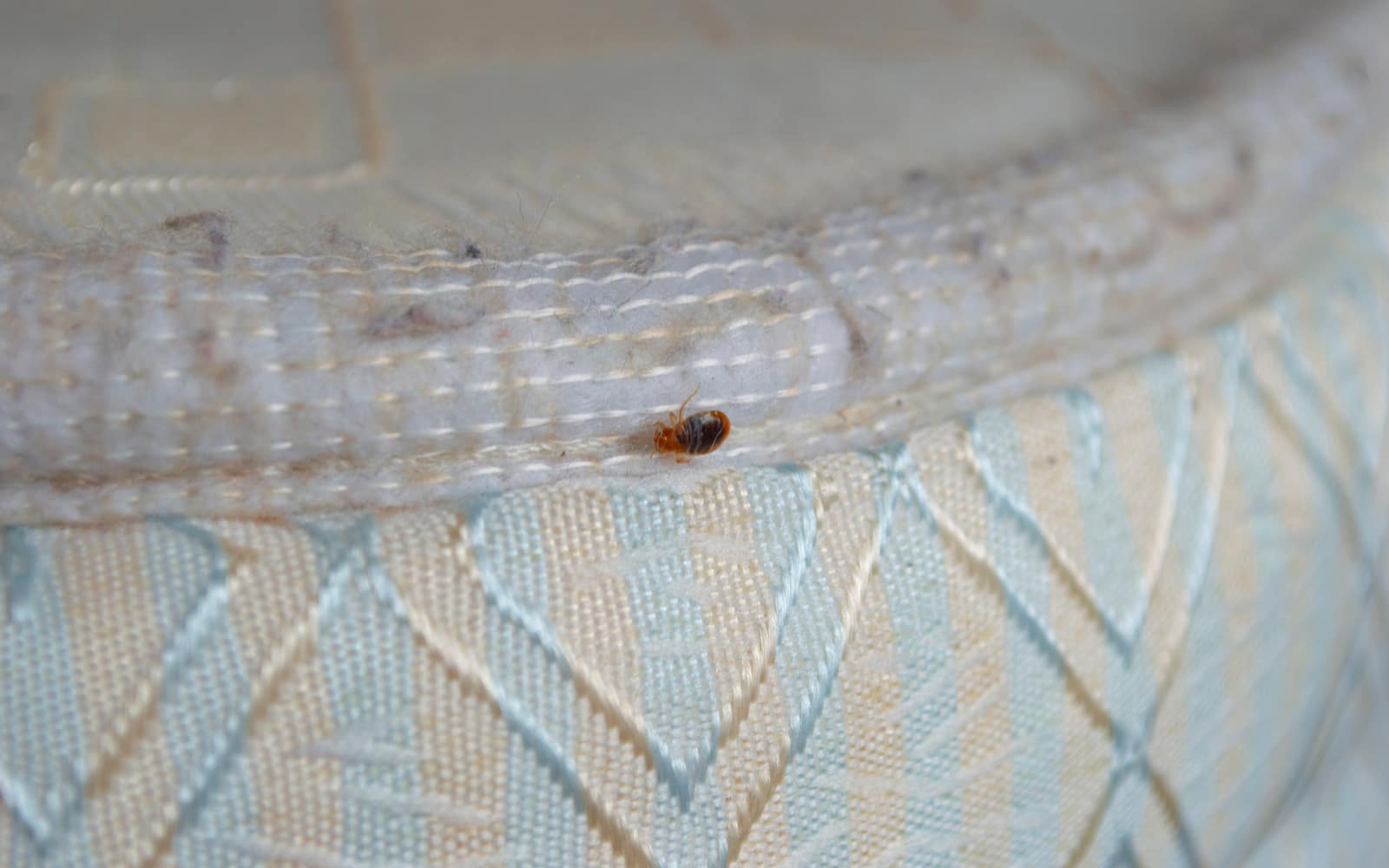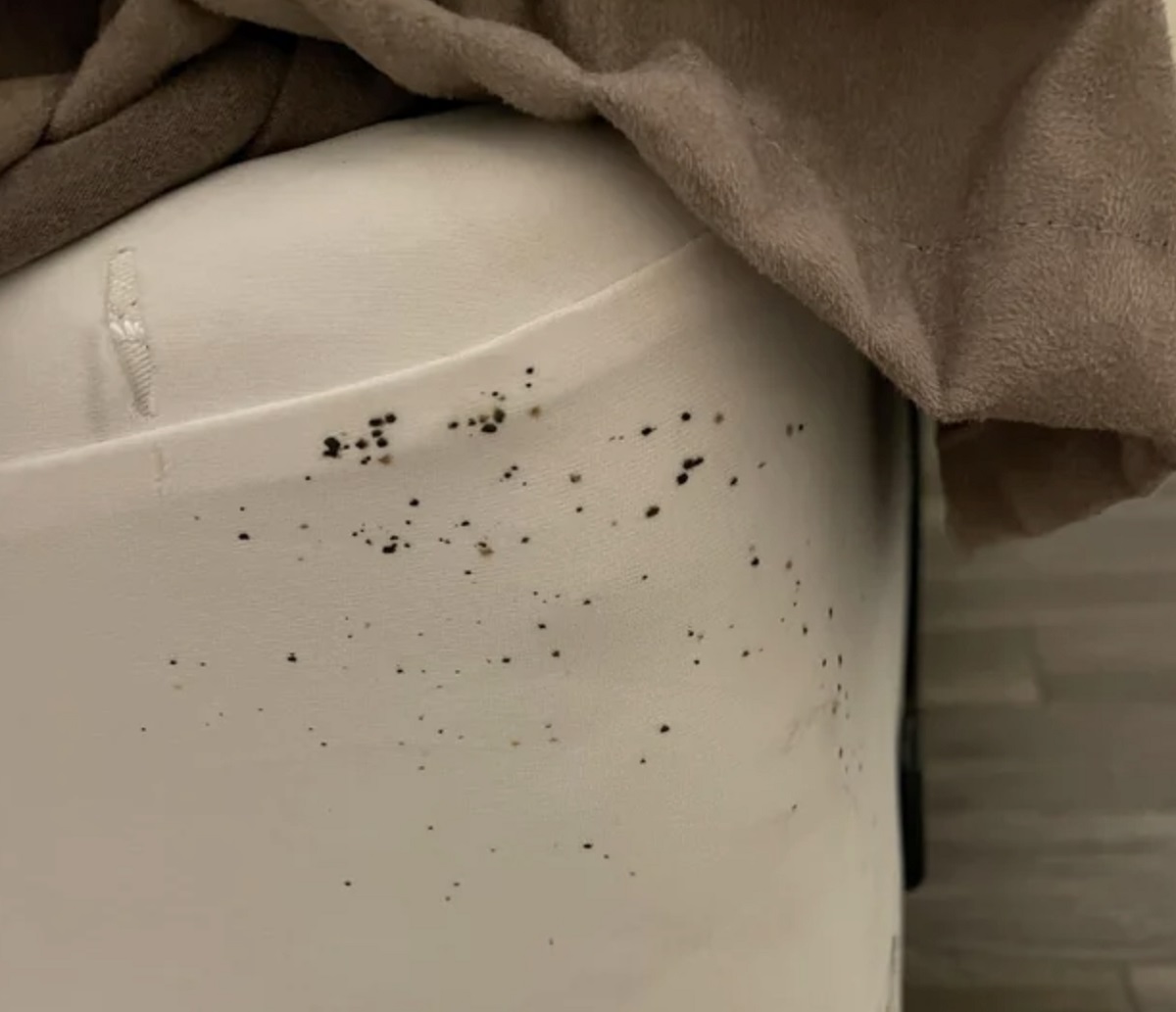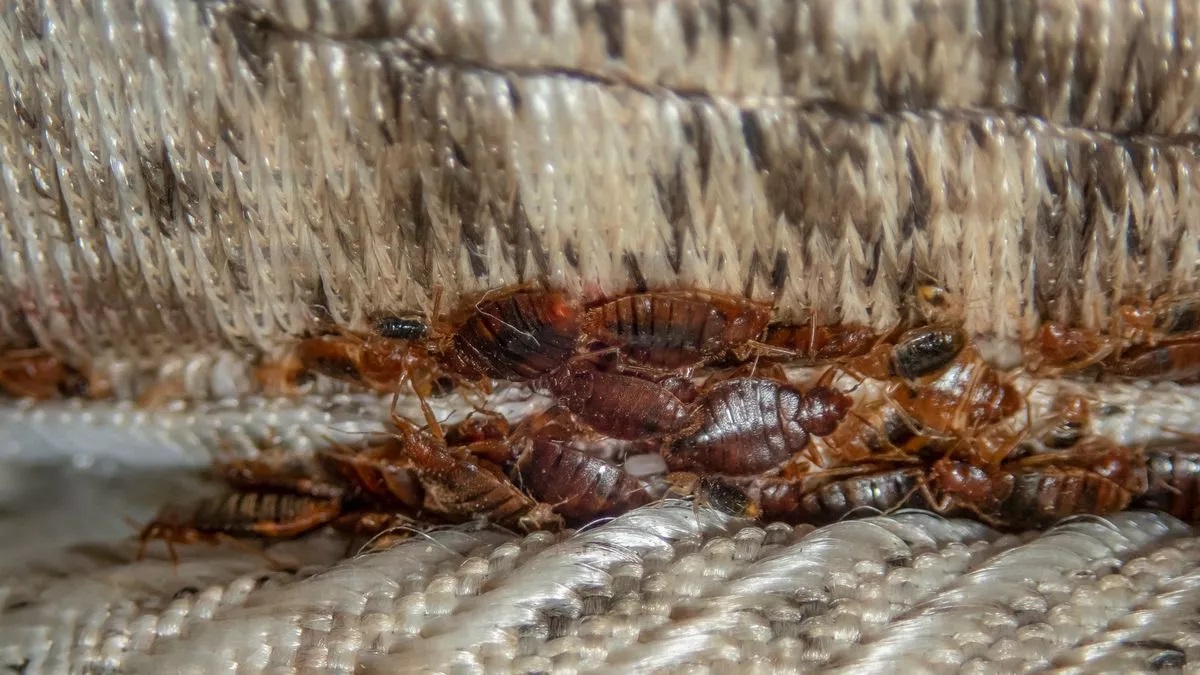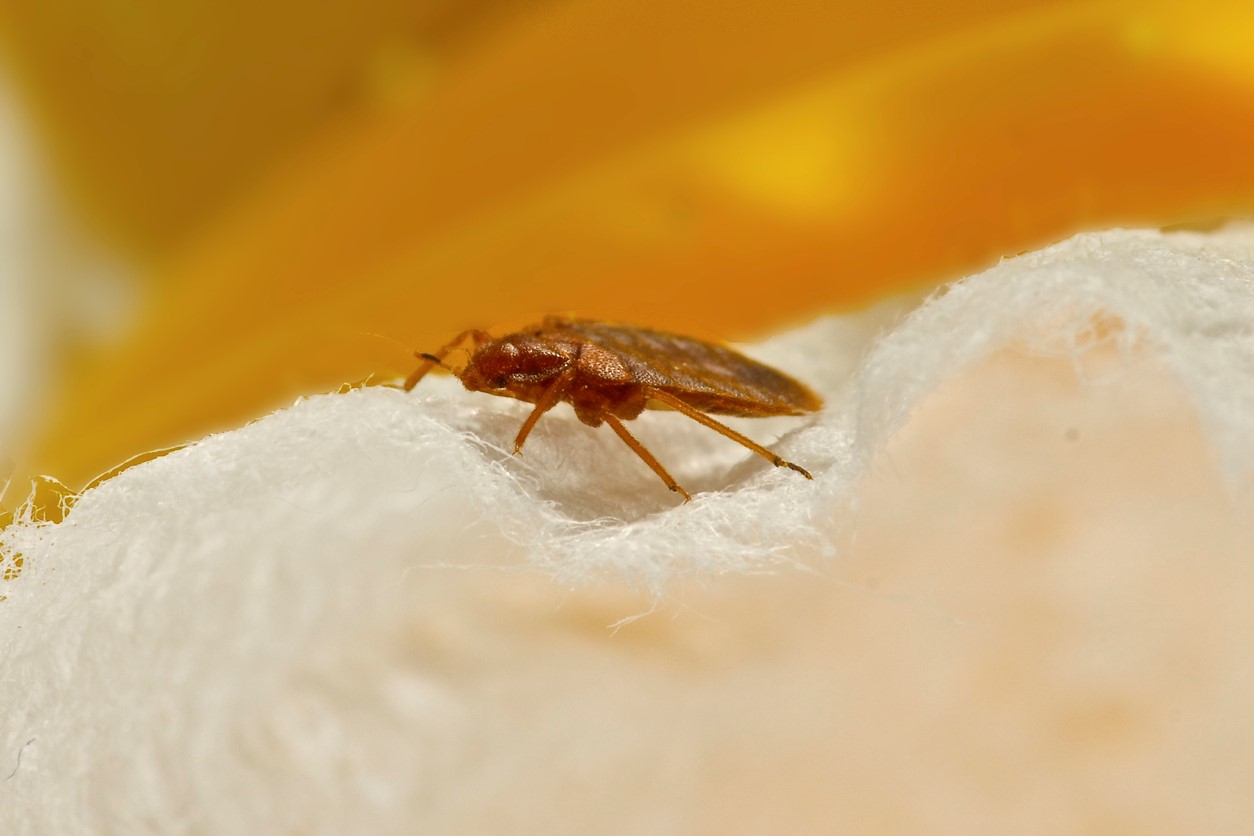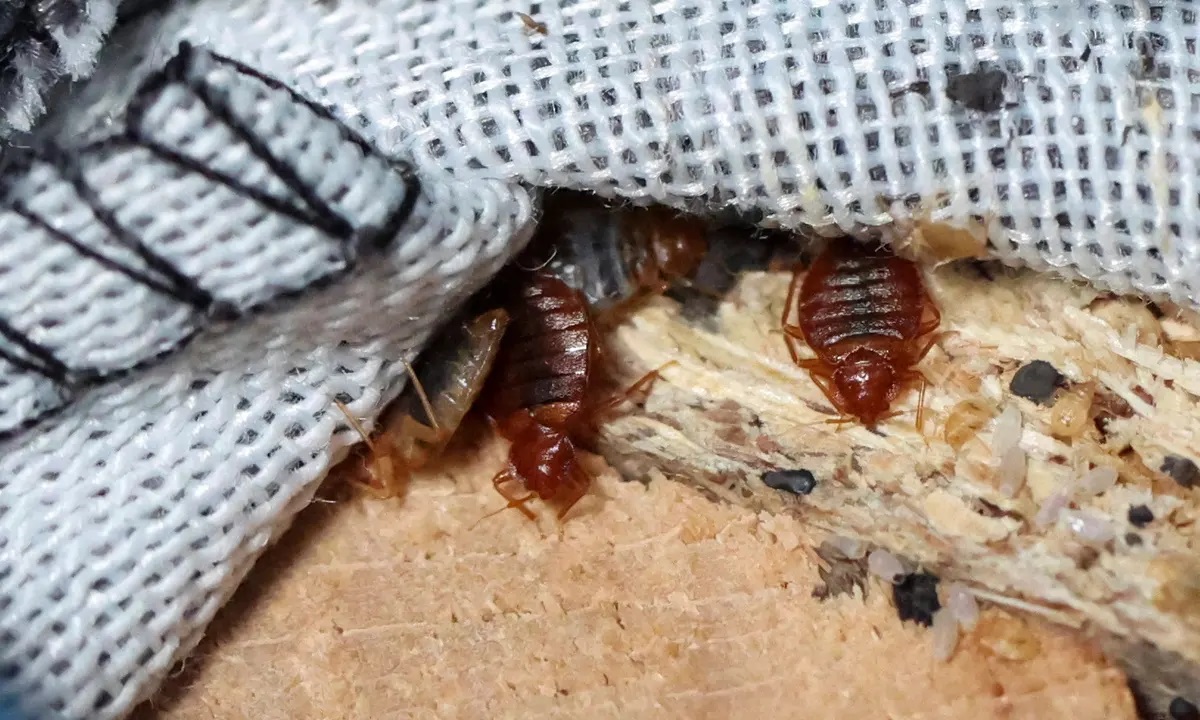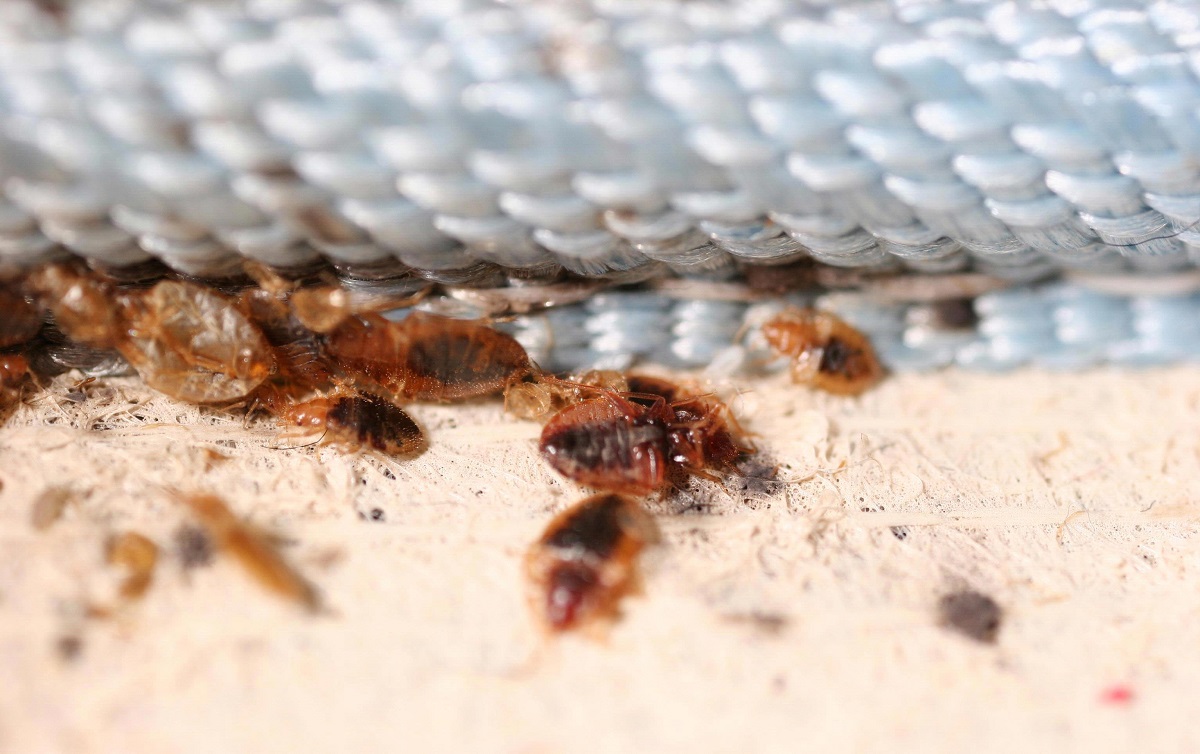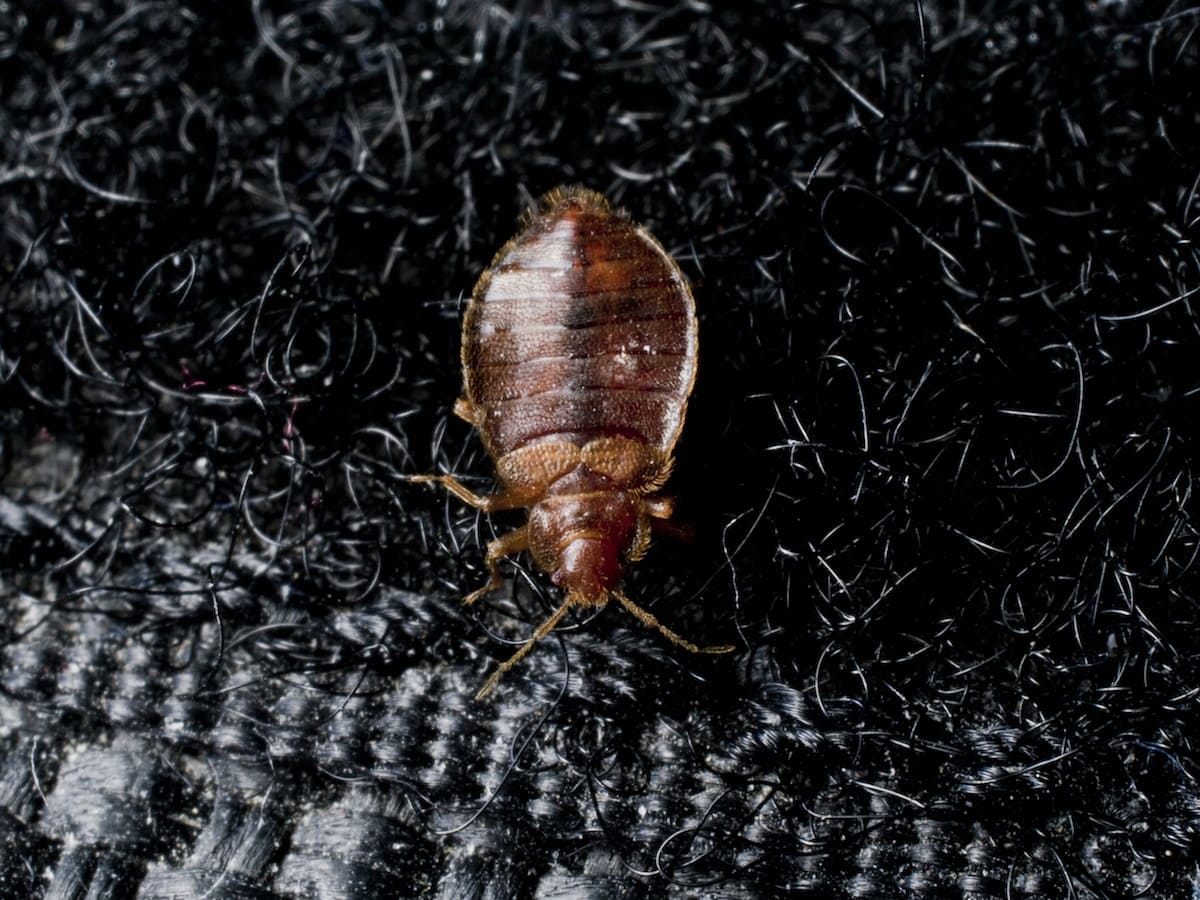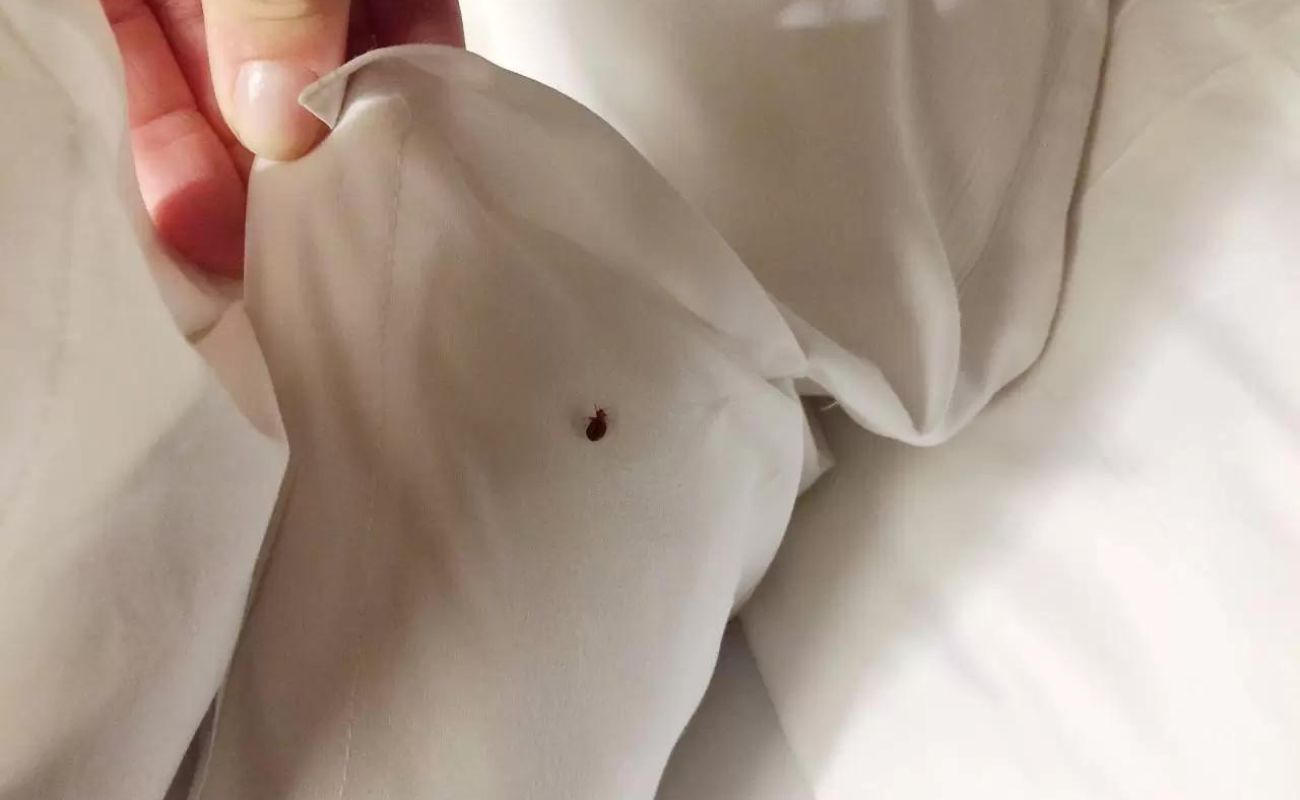Home>Furniture>Bedroom Furniture>What To Do With Pets During Bed Bug Treatment
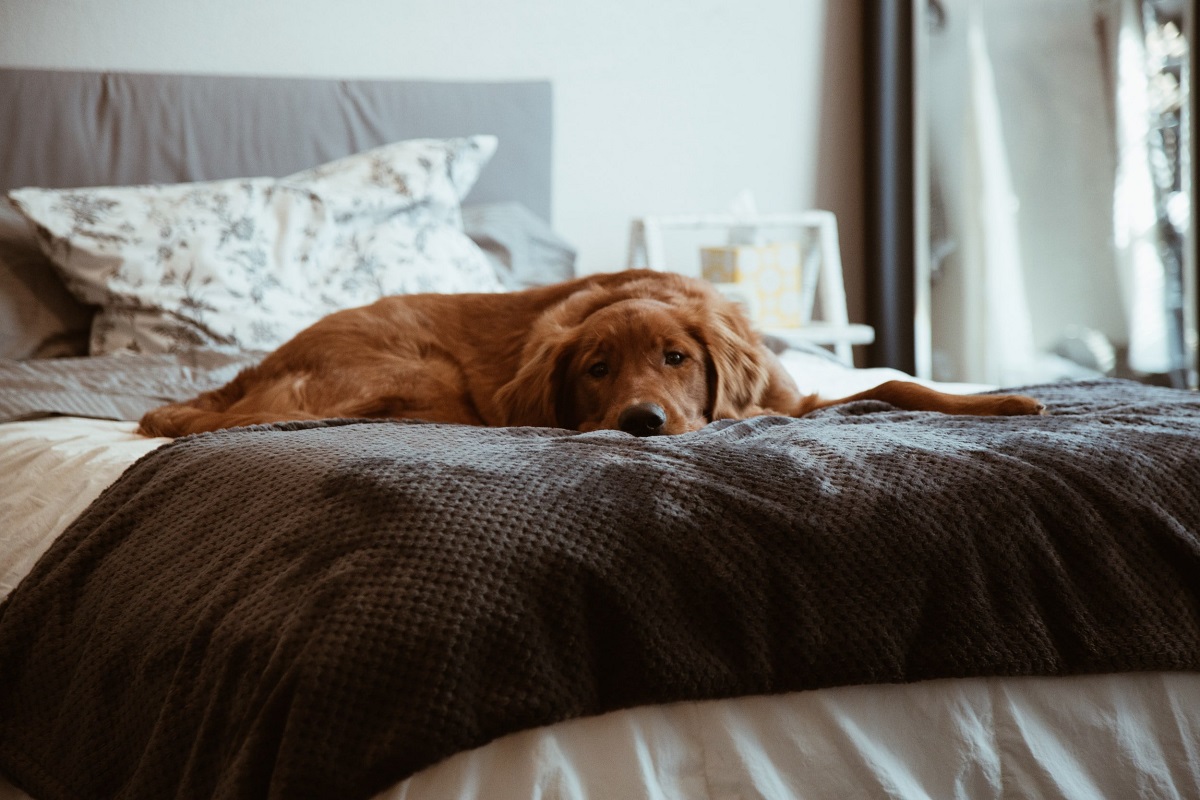

Bedroom Furniture
What To Do With Pets During Bed Bug Treatment
Modified: January 9, 2024
Looking for a safe solution for your pets during bed bug treatment? Discover the best options to protect your furry friends while treating your bedroom furniture.
(Many of the links in this article redirect to a specific reviewed product. Your purchase of these products through affiliate links helps to generate commission for Storables.com, at no extra cost. Learn more)
Introduction
Bed bugs are a common nuisance that can infest your home and disrupt your quality of life. When faced with a bed bug infestation, it’s important to take immediate action to eradicate these pesky pests. However, if you have pets, their safety and well-being must also be taken into consideration during the treatment process.
Bed bug treatments typically involve the use of insecticides and other chemicals that may pose risks to both humans and animals. While the primary focus is on eliminating the bed bugs, it is crucial to ensure that your pets are not exposed to any harmful substances during the treatment. In this article, we will explore the challenges of bed bug treatment when you have pets and provide practical advice on what to do with your furry friends during this process.
Key Takeaways:
- Protect your pets during bed bug treatment by consulting with your vet, creating a safe space, and considering temporary relocation options to ensure their safety and well-being.
- Choose pet-safe bed bug treatment methods like heat, steam, or cryonite to effectively eliminate infestations while keeping your furry friends out of harm’s way.
Read more: What Are Bed Bugs
Understanding Bed Bug Infestations
Before delving into the challenges of bed bug treatment with pets, it is essential to understand the nature of bed bug infestations. Bed bugs are small, oval-shaped insects that feed on the blood of humans and animals. They are often found in close proximity to sleeping areas, hence their name.
Bed bugs are notorious hitchhikers and can easily make their way into your home through furniture, luggage, or clothing. Once they find their way in, they quickly multiply and infest mattresses, box springs, and other upholstered furniture. These tiny pests can go unnoticed for long periods as they hide during the day and emerge at night to feed on their unsuspecting hosts.
Bed bug infestations can cause a range of problems, including itchy bites, allergic reactions, and sleep disturbances. If left untreated, the infestation can spread throughout your home and become even more challenging to eradicate.
It’s important to identify the signs of a bed bug infestation early on, such as small bloodstains on bedding, dark spots (excrement) on mattresses, or the presence of tiny, apple seed-sized bugs in crevices. If you suspect a bed bug infestation, it’s crucial to seek professional pest control assistance as soon as possible.
Challenges of Bed Bug Treatment
Eliminating a bed bug infestation is a complex task that requires thorough planning and specialized treatments. However, when you have pets in your home, additional challenges arise. The safety and well-being of your furry friends must be a top priority during the treatment process.
One of the main challenges is that many traditional bed bug treatments involve the use of insecticides and chemicals that can be harmful to pets. These substances are designed to effectively kill bed bugs but can pose risks to animals if they come into contact with them or inhale the fumes.
Another challenge is that bed bug treatments often require preparing the infested areas by removing clutter, washing and drying bedding at high temperatures, and vacuuming thoroughly. These tasks can be disruptive to pets and may cause stress or anxiety.
Furthermore, the physical presence of pest control professionals during the treatment process can also be overwhelming for pets. The constant movement, noise, and unfamiliar scents may leave them feeling anxious or scared.
Overall, the challenges of bed bug treatment with pets revolve around the need to find a balance between effective eradication of the infestation and ensuring the safety and well-being of your beloved animals.
Safety Concerns for Pets during Pest Control
When it comes to pest control treatments for bed bugs, it’s important to take precautions to ensure the safety of your pets. While the specific safety concerns may vary depending on the treatment method used, here are some general considerations to keep in mind:
- Insecticide Exposure: Many traditional insecticides used for bed bug treatments can be toxic to pets if ingested or if they come into contact with their skin. It’s crucial to keep your pets away from treated areas until the insecticides have dried or dissipated.
- Airborne Chemicals: Some treatments may involve the use of fumigation or fogging techniques that release airborne chemicals. These chemicals can be harmful if inhaled by your pets. It’s important to remove your pets from the treated area and provide proper ventilation before allowing them back inside.
- Chemical Residues: Even after drying, some insecticides may leave behind residual chemicals. Pets, especially those who like to explore and play on the floor, may come into contact with the residues. It’s important to monitor your pets and restrict their access to treated areas until it is safe for them to return.
- Stress and Anxiety: The presence of pest control professionals, the disruption of their usual routines, and the unfamiliar sights and smells can cause stress and anxiety in pets. This can lead to behavioral changes and health issues. Providing a calm and safe environment for your pets during the treatment process is crucial.
It is worth noting that different pest control companies may use different treatment methods and products. It’s essential to communicate with your pest control provider about your concerns regarding pet safety and ask for their recommendations on how to best protect your furry friends during the treatment process.
Preparing Pets for Bed Bug Treatment
When faced with a bed bug infestation and the need for pest control treatments, there are several steps you can take to prepare your pets and ensure their safety. Here are some guidelines to follow:
- Consult with your veterinarian: Before the treatment begins, it’s a good idea to consult with your veterinarian. They can provide guidance on any specific precautions or concerns related to your pets’ health or medical conditions.
- Inform the pest control company: Make sure to inform the pest control company about the presence of pets in your home. This will allow them to tailor their treatment methods and offer advice on how to keep your pets safe during the process.
- Create a safe space: Set up a designated area in your home where you can keep your pets during the treatment process. This space should be away from the treated area and should include their bedding, toys, food, and water. It’s essential to minimize their exposure to any chemicals or disturbances.
- Remove pets from the premises: If possible, consider temporarily relocating your pets to a friend or family member’s home, or to a pet-friendly hotel or boarding facility. This will ensure their safety and well-being during the treatment process.
- Secure cages or crates: If you are unable to relocate your pets, make sure to secure their cages or crates in a safe and secluded area of the house. Covering the cages with a cloth can provide an extra layer of protection and help to reduce stress.
- Keep pets away from treated areas: If you cannot remove your pets from the premises, ensure that they are kept far away from the areas being treated. Close doors and use baby gates or temporary barriers to prevent access. This will help to minimize the risk of chemical exposure.
- Follow post-treatment instructions: Once the treatment is completed, carefully follow any instructions provided by the pest control company regarding the safe re-entry of your pets into the treated areas. This may include waiting for a specific time period or ensuring proper ventilation.
By taking these steps to prepare your pets for bed bug treatment, you can minimize their exposure to potential hazards while ensuring their safety and well-being throughout the process.
Tip: During bed bug treatment, keep pets out of the treated area and follow the instructions provided by the pest control professional. Consider boarding pets or keeping them with a friend or family member until the treatment is complete.
Read more: What To Do If You Have Bed Bugs
Temporary Relocation Options for Pets
When dealing with a bed bug infestation and the need for pest control treatments, one of the best ways to ensure the safety of your pets is by temporarily relocating them. This allows them to stay in a secure and controlled environment away from the treated areas. Here are some temporary relocation options for your pets:
- Friends or family: Reach out to trusted friends or family members who may be willing to accommodate your pets for a short period. Ensure that the temporary home is safe, comfortable, and familiar to your pets.
- Pet-friendly hotels: Consider booking a stay at a pet-friendly hotel or a pet boarding facility. These establishments are equipped to care for pets and provide them with a comfortable and secure environment while you deal with the bed bug treatment process.
- Pet boarding facilities: If there are no suitable options available among friends or family, look for reputable pet boarding facilities. Make sure to research and visit the facilities in advance to ensure they meet your standards of care and safety.
- Pet sitters: Hiring a professional pet sitter or utilizing the services of a reliable pet care app can be another option. These individuals can come to your home and take care of your pets, providing them with feeding, exercise, and companionship while you’re dealing with the bed bug treatment.
- Temporary foster homes: Reach out to local animal shelters or rescue organizations to inquire about temporary foster homes for your pets. These organizations may have programs that provide short-term care for pets in situations like bed bug treatments.
- Home exchange: If you have connections within a pet-friendly home exchange network, consider arranging a temporary exchange with another pet owner. This way, both parties can have peace of mind that their pets are being cared for in a safe environment.
It’s important to plan ahead and make these arrangements in advance of the bed bug treatment. Remember to provide the temporary caregivers with all necessary information about your pets, including their routine, dietary needs, medical history, and any specific instructions to ensure their well-being during their time away from home.
Temporary relocation options allow your pets to be safe and comfortable while the bed bug treatment is being carried out. It also minimizes their exposure to any potentially harmful chemicals used during the process.
Bed Bug Treatment Methods that are Safe for Pets
When it comes to bed bug treatments, there are methods available that are safe for pets and effectively eliminate the infestation. It’s crucial to work with a professional pest control company that understands and prioritizes pet safety. Here are some bed bug treatment methods that are considered safe for pets:
- Heat Treatment: Heat treatment involves raising the temperature of the infested area to a level that is lethal for bed bugs. This method is safe for pets as it does not involve the use of chemicals. However, it’s important to follow the guidelines provided by the pest control company to ensure that the process is conducted safely and efficiently.
- Steam Treatment: Steam treatment uses high-temperature steam to kill bed bugs and their eggs. This method is safe for pets as it does not require the use of chemicals. It’s important to use a steam cleaner that generates a sufficient amount of steam and follow the instructions provided by the manufacturer.
- Cryonite Treatment: Cryonite is a non-toxic treatment that uses carbon dioxide in solid form to freeze and kill bed bugs. This method does not pose any risks to pets as it does not involve the use of chemicals or leave behind any chemical residues.
- Non-chemical treatment methods: There are various non-chemical treatment options that can be effective in eliminating bed bugs. These may include vacuuming, brushing, and physically removing bed bugs and their eggs. These methods are safe for pets but may require thorough and repeated efforts to ensure complete eradication.
- Localized chemical treatments: In some cases, localized and targeted chemical treatments may be used in areas where bed bugs are most prevalent. The pest control professionals will use pet-safe insecticides approved for indoor use and follow the appropriate guidelines to minimize any risks to pets.
It’s important to note that the safety of the treatment methods can vary depending on the specific products and techniques used. Working with a professional pest control company that has experience in pet-safe treatments is crucial to ensure the well-being of your pets.
Always communicate openly with the pest control professionals about your concerns regarding pet safety and ask them about the specific methods they use and any precautions you should take to protect your pets during and after the treatment.
Monitoring and Preventing Future Bed Bug Infestations
Once you’ve successfully treated your home for bed bugs, it’s important to remain vigilant and take preventive measures to avoid future infestations. Here are some tips for monitoring and preventing future bed bug infestations:
- Regular inspections: Conduct regular inspections of your home to catch any signs of bed bugs early on. Check your mattress, bed frame, furniture, and other possible hiding spots for bed bugs, such as cracks, crevices, and electrical outlets.
- Encase mattresses and box springs: Invest in high-quality, bed bug-proof mattress and box spring encasements. These encasements create a barrier that keeps bed bugs from infesting these areas and makes it easier to detect and eliminate them if they do appear.
- Reduce clutter: Clutter provides excellent hiding spots for bed bugs, so it’s important to keep your living space tidy and minimize unnecessary clutter. Regularly declutter and organize your belongings, especially in areas where you sleep or spend a lot of time.
- Vacuum regularly: Regular vacuuming helps to remove any potential bed bugs and their eggs. Pay close attention to cracks, crevices, baseboards, and the seams and folds of mattresses and upholstery. Dispose of the vacuum bag or empty the canister in a sealed plastic bag after each use.
- Be cautious when acquiring used furniture: If you’re considering purchasing used furniture, thoroughly inspect it for any signs of bed bugs before bringing it into your home. Be particularly wary of items like mattresses, sofas, and chairs that provide ideal hiding spots for bed bugs.
- Practice good hygiene: Regularly wash and dry your bedding, including sheets, pillowcases, and blankets, on high heat to kill any potential bed bugs. Keep your living space clean and free from food crumbs or spills that may attract pests.
- Seal cracks and crevices: Seal any cracks, crevices, and gaps in walls, baseboards, and electrical outlets with caulk to prevent bed bugs from finding hiding spots.
- Keep an eye on pets: Pets can unknowingly bring bed bugs into your home. Regularly inspect your pets’ bedding, sleeping areas, and fur for any signs of bed bugs. If you suspect your pet has been exposed to bed bugs, consult with a veterinarian for appropriate treatments.
By staying proactive and following these prevention tips, you can help reduce the risk of future bed bug infestations and maintain a bed bug-free home. However, it’s important to remember that bed bugs are highly resilient pests, so it’s crucial to act swiftly if you do notice any signs of a reinfestation.
Conclusion
Dealing with a bed bug infestation can be a daunting task, especially when you have pets in your home. It is essential to prioritize the safety and well-being of your furry friends during the treatment process. By understanding the challenges and taking necessary precautions, you can ensure that your pets are protected from any potential harm.
During the treatment, consult with your veterinarian and inform the pest control company about the presence of pets in your home. Create a safe space for your pets away from the treated areas and consider temporary relocation options if possible. Secure cages or crates for your pets if relocation is not feasible.
There are bed bug treatment methods available that are safe for pets, such as heat treatment, steam treatment, cryonite treatment, and non-chemical methods. Work with a professional pest control company that prioritizes pet safety and follows industry best practices.
After the treatment, continue to monitor your home regularly for signs of bed bug activity and take preventive measures to avoid future infestations. Regular inspections, reducing clutter, vacuuming, and practicing good hygiene are crucial steps in keeping bed bugs at bay.
Remember, prevention is key. By remaining vigilant and taking proactive measures, you can help protect your home and pets from bed bug infestations. If you do encounter any signs of a reinfestation, don’t hesitate to seek professional help and address the issue promptly.
By addressing the challenges of bed bug treatment with pets and implementing the recommended strategies, you can ensure that your pets remain safe and healthy while eliminating these pesky pests from your home.
Frequently Asked Questions about What To Do With Pets During Bed Bug Treatment
Was this page helpful?
At Storables.com, we guarantee accurate and reliable information. Our content, validated by Expert Board Contributors, is crafted following stringent Editorial Policies. We're committed to providing you with well-researched, expert-backed insights for all your informational needs.
